German plum cake, also known as Zwetschgenkuchen is a culinary highlight in late summer and autumn in Germany. When plum season is on, you will find all kinds of German plum recipes from plum dumplings to plum butter, and especially this cake. This classic German fruit cake is made with a simple yeast dough, a layer of plums, and a delightful streusel topping.
It is no secret that in Germany we love both seasonal fruit and streusel, be it in a simple German Streusel cake or an Apple Streusel Cake.
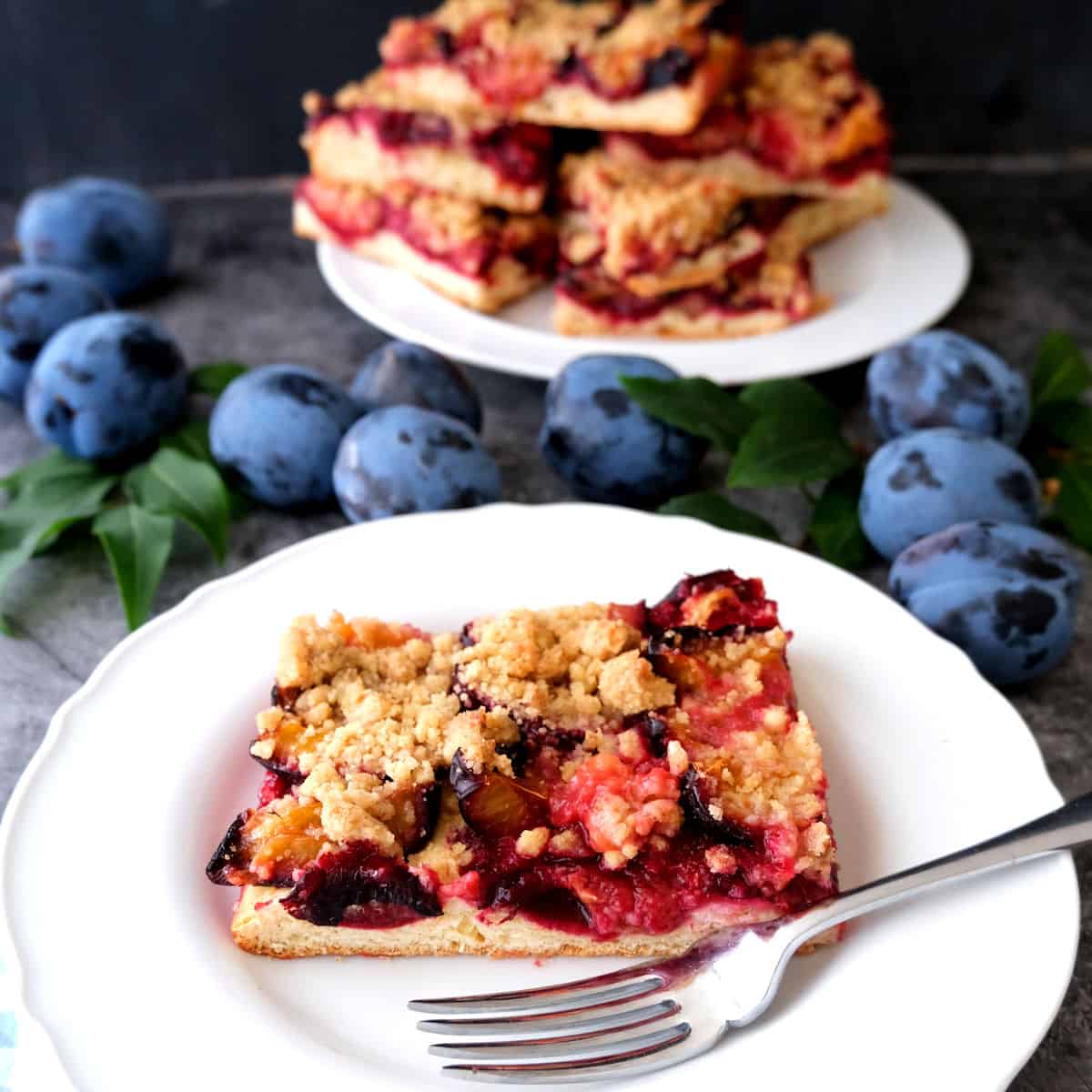
About German Plum Cake
German Plum Cake is a simple plum sheet cake that is traditionally made with a yeast base. Today you can find recipes using a shortcrust or quark base instead. Other examples of cakes using a yeast base are butter kuchen or red currant cake.
It is a very popular summer cake and how it is served depends on which region in Germany you are in.
In Pfalz, Rheinhessen, and Franconia, it is popular to serve the plum cake together with German Potato Soup, or another vegetable soup. In Saarland, it is common to serve plum cake alongside a Green Bean Soup.
Mostly you will find it served with a dollop of freshly whipped cream.
What is Plum Cake called in German?
Pflaumenkuchen, Zwetschgendatschi, Zwetschgenkuchen - there are many different names for plum cake in Germany. Again, it depends on the Region.
- Pflaumenkuchen is the most common name for plum cake. "Pflaumen" literally translates as "plums" and refers to any type of plum and "kuchen" means cake.
- "Zwetschgen" are a special kind of plum variety - in English, they are called Empress Plums or Italian Plums, or Italian Prune Plums. So if these plums are used the cake is often called "Zwetschgenkuchen".
- Zwetschgendatschi is the term used in Bavaria, Baden-Würtenberg and Austria.
- Quetschkuche is the name used in Hessia, Rhinland-Palatinate and Saarland.
How to make
Ingredients
For the yeast dough
- flour (Germany Type 405, UK Plain Flour, USA Pastry or cake flour)
- A packet of instant yeast, or ½ cube of fresh yeast
- milk
- sugar
- butter
- lemon peel
- egg yolk
- salt
For the crumble topping
- flour (Germany Type 405, UK Plain Flour, USA Pastry or cake flour)
- sugar
- butter
- ground cinnamon (affiliate link)
- Vanilla sugar or vanilla extract (affiliate link)
- 1 kg Italian prune plums
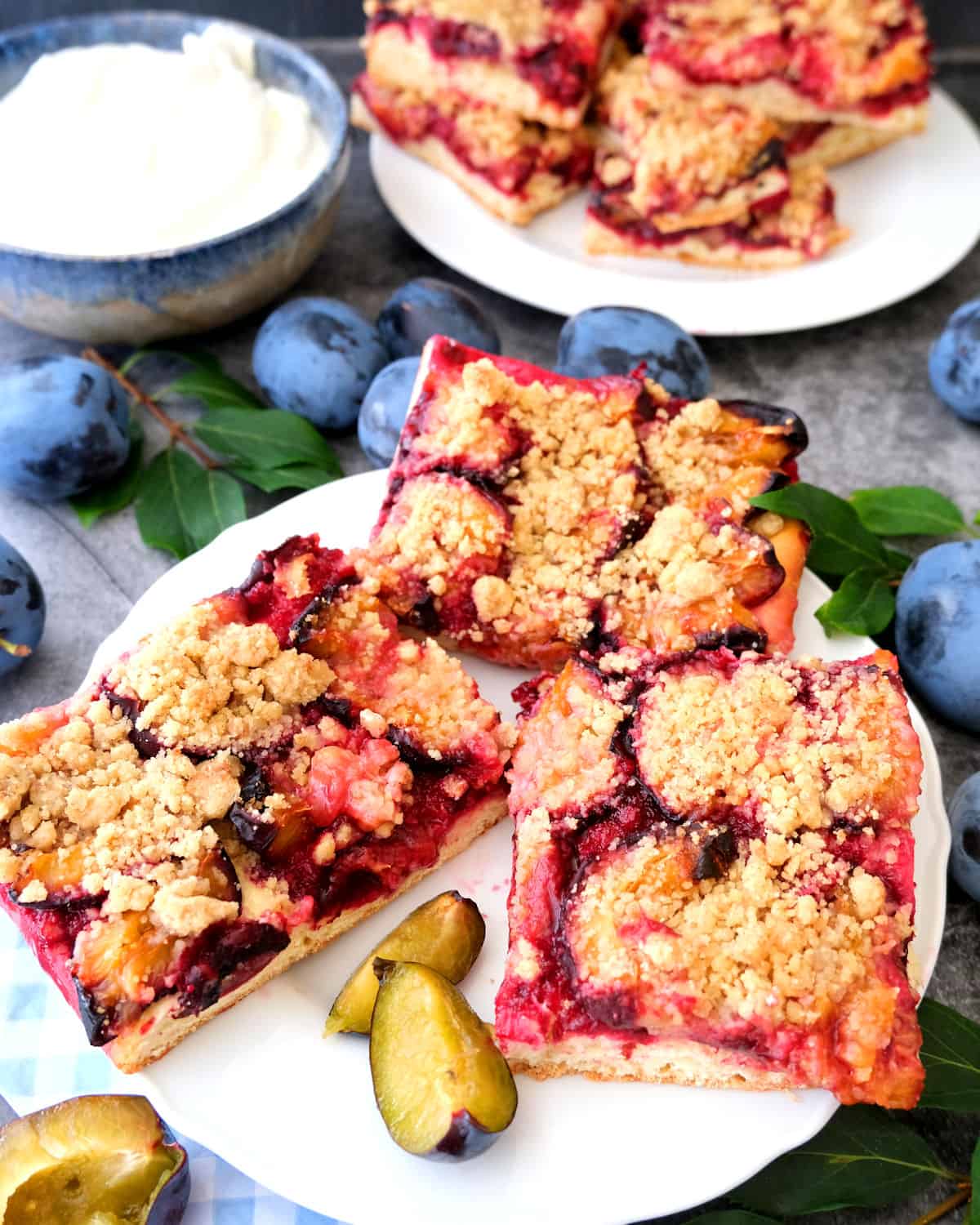
Recipe Steps
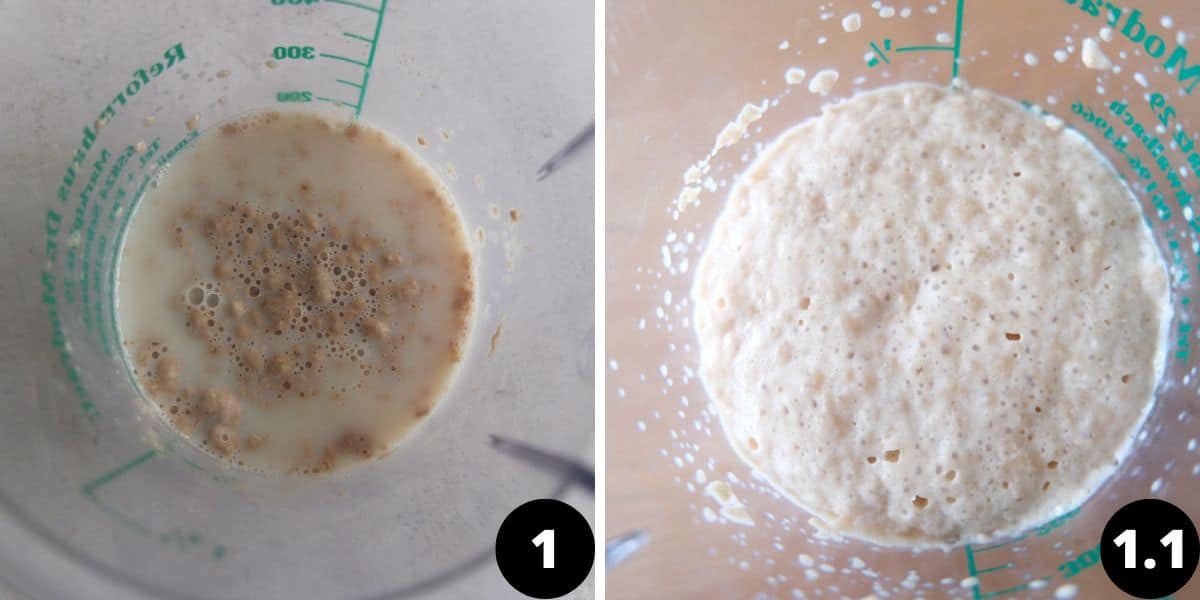
- Warm up the milk until it is lukewarm. Then add the yeast and sugar and mix well. Leave to rest for 10 minutes. You should see bubbles forming on the surface, which means the yeast is activated. If the yeast does not bubble, then the milk might have been too hot, so throw away and start again.
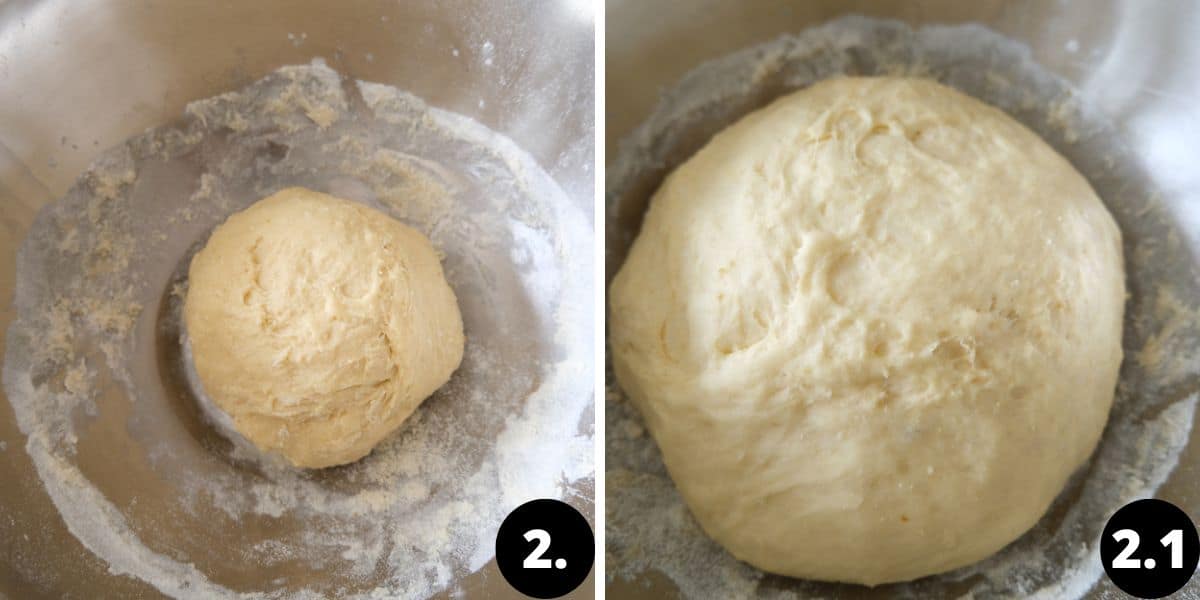
- Add the yeast milk to the flour, egg yolks, salt and lemon peel and butter. Using a stand or hand mixer with a dough hook, knead the dough for about 5 minutes. Cover the bowl with a towel and leave to rise at a warm place for approx. 30 min (see tips below for working with yeast)
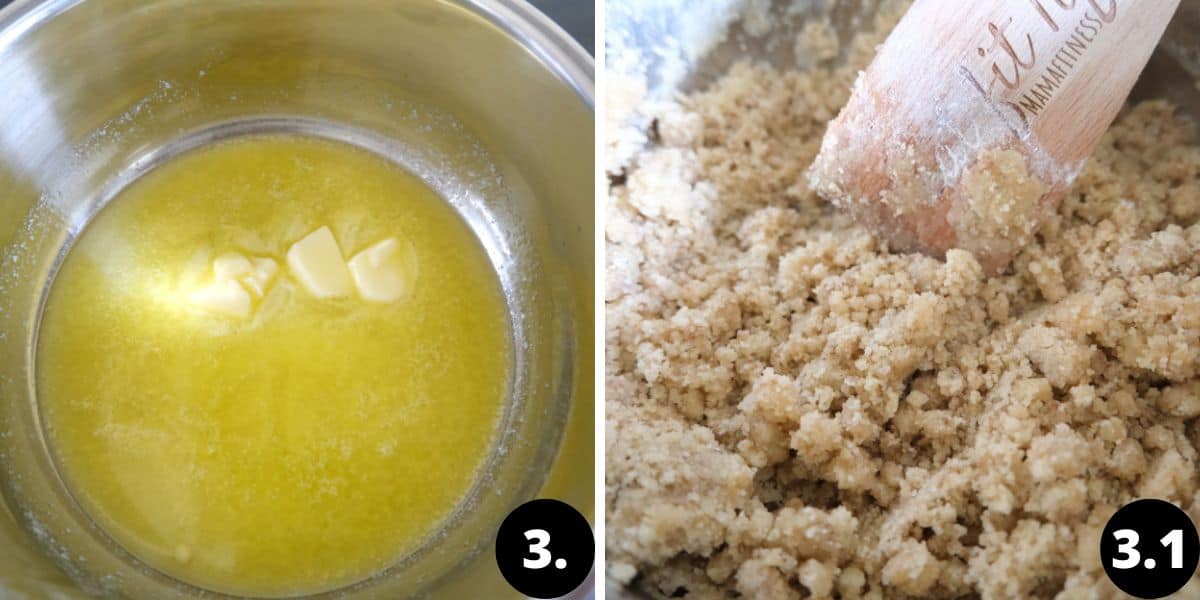
- In the meantime, start to make the crumble. Place the butter in a saucepan and carefully melt it. Once it is melted remove from the heat and combine with the flour, sugar, and cinnamon. Mix until you achieve a fine crumble.
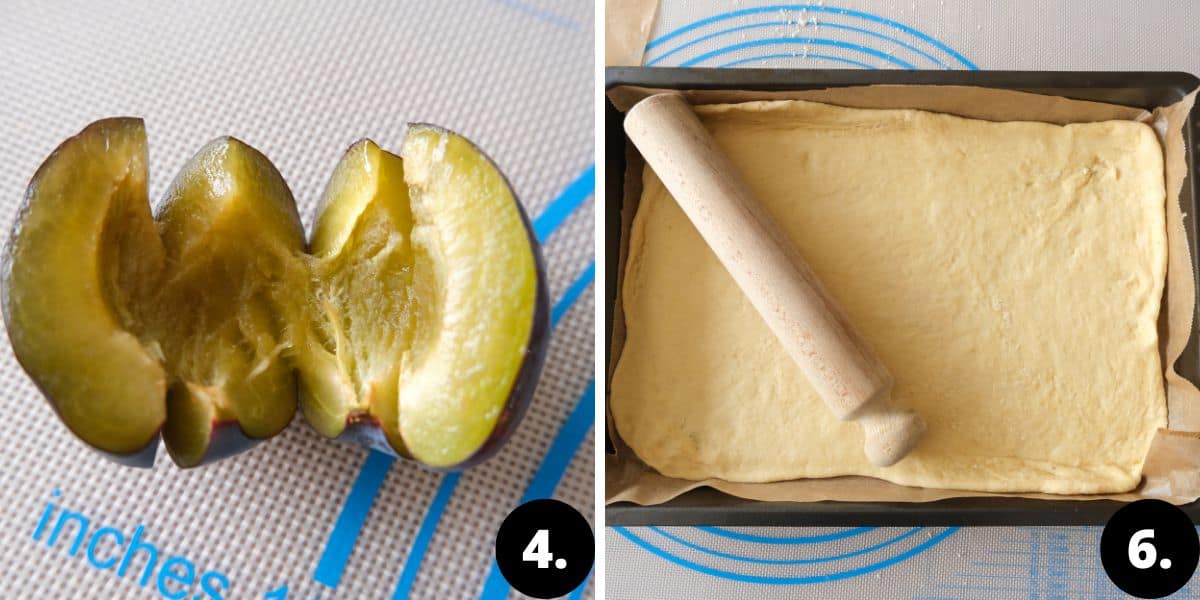
- Wash the plums and drain them. Slice them at both ends crosswise. On one of the ends, slice the prune open and remove the stone.
- Preheat your oven to 200°C/392°F top to-bottom heat.
- Once the yeast dough has risen, briefly knead it on a floured surface. Then roll it out, using a rolling pin (affiliate link), to the approximate size of your baking tray. Either line the baking tray with baking parchment or smear it with butter. Lay the rolled dough into the baking pan.
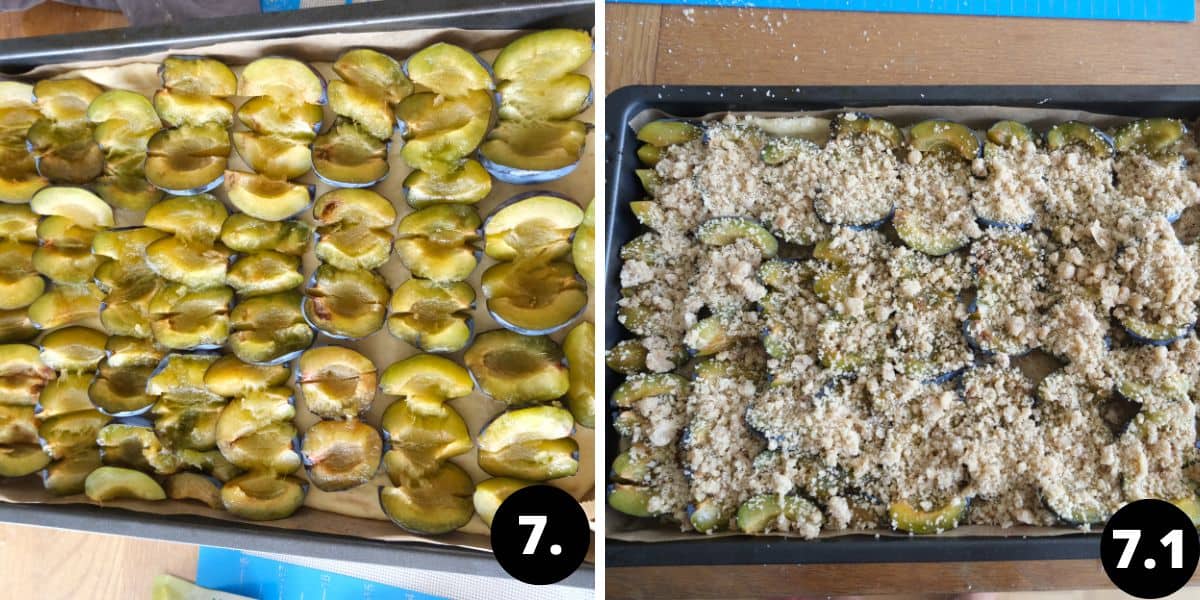
- Arrange the plums like roof tiles (see picture) on the dough and sprinkle the crumble on top.
- Bake for approximately 30-35 minutes.
- Serve with a dollop of whipped cream.
Recipe Variations
There are many variations of this recipe. Some leave out the streusel to save some calories, others use a different base. Here are some suggestions
- Remove the streusel and instead sprinkle some cinnamon and sugar over the plums. This will give a similar sweet and sour taste.
- Use a shortcrust base instead of a yeast base. For example, you can use the base of the apple streusel cake.
- Try different plums - Zwetschgen may be difficult to get hold of outside of Europe, so simply replace the Italian prunes with another variety.
How to store plum cake
This Pflaumenkuchen tastes best fresh, as it is made with yeast dough. However, it will keep in the fridge without any problems for up to 3 days.
Can you freeze it?
Yes this cake, without the cream, can be frozen in portions. It will stay good for up to three months. The crumbles might not be as crispy as they were before they were frozen.
More German Cakes
Did you try this recipe?
Please leave a rating or make a comment below. I would love to hear from you. You can send me an e-mail or comment on Facebook, Instagram or Pinterest.
Why not share our Facebook Group - Homemade German Food & Recipes. Here we chat about German Food and share recipes.
Recipe
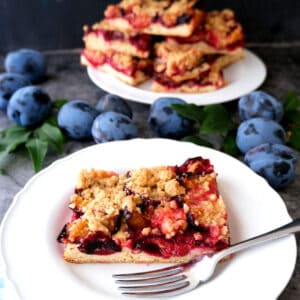
Traditional German Plum Cake (Zwetschgenkuchen)
Equipment
Ingredients
- 300 g flour 10.5 oz, (Germany Type 405, UK Plain Flour, USA Pastry or cake flour)
- 2 teaspoon instant yeast 1 packet, or ½ cube of fresh yeast
- 125 ml milk
- 40 g sugar 1.4 oz,
- 150 g butter 5.2 oz at room temperature
- 1 teaspoon grated lemon peel
- 1 egg yolk
- salt
- butter to grease the pan (optional)
For the Crumble Topping
- 150 g flour 5.2 oz
- 75 g sugar 2.6 oz
- 75 g butter 2.6 oz
- 2 teaspoon ground cinnamon
- 1 teaspoon vanilla sugar or 1 teaspoon vanilla extract (affiliate link)
For the fruit topping
- 1 kg italian prune plums
Instructions
- Warm up the milk until it is lukewarm. Then add the yeast and sugar and mix well. Leave to rest for 10 minutes. You should see bubbles forming on the surface, which means the yeast is activated. If the yeast does not bubble, then the milk might be too hot, throw away and you start again.
- Add the yeast milk to the flour, egg yolks, salt, lemon peel and butter. Using a stand or hand mixer with a dough hook, knead the dough for about 5 minutes. Cover the bowl with a towel and leave to rise at a warm place for approx. 30 min see tips below for working with yeast)
- In the meantime, place the butter in a saucepan and carefully melt it. Once it is melted remove from the heat and combine with the flour, sugar and cinnamon. Mix until you achieve a fine crumble.
- Wash the plums and drain them. Slice them at both ends crosswise. On one of the ends, slice the prune open and remove the stone.
- Preheat your oven to 200°C/392°F top to bottom heat.
- Once the yeast dough has risen, briefly knead it on a floured surface. Then roll it out, using a rolling pin (affiliate link) to the approximate size of your baking tray. Either line the baking tray with baking parchment or grease it with butter. Lay the rolled dough into the baking pan.
- Arrange the plums like roof tiles (see picture) on the dough and sprinkle the crumble on top.
- Bake for approximately 30-35 minutes.
- Serve with a dollop of whipped cream.
Notes
Please see the step-by-step pictures in the main post.
Baking with Yeast: Steps for Sucess
Baking with yeast is not rocket science. Here are my best tips to ensure that your yeast dough rises every time.- Use lukewarm milk. The microorganism in the yeast will activate through heat and sugar. The ideal temperature of the milk should be around 30-35°C / 86-95 °F. If the temperature rises above 45°C/113°F, the cells will die and your dough will not rise.
- Make sure your yeast is in-date. Using out-of-date yeast is a common reason for the dough not rising.
- 35°C/95 °F is the perfect temperature for the dough to rise. The temperature should not get hotter than 40 °C. If your kitchen is cooler, then preheat the oven to the lowest setting. Turn the oven off and place the dough in the oven. Cover it with a moist tea towel so it does not dry out. (If your lowest setting is hotter than 40 like mine 50, leave the door open for a couple of minutes before placing the dough in)
- Knead the dough thoroughly - To ensure that the bread becomes light and fluffy you need to knead it for a long time. A well-kneaded dough hardly sticks. After the dough rises it is important to knead it again, as during the rising process gas bubbles form. This will ensure that your bread bakes evenly.






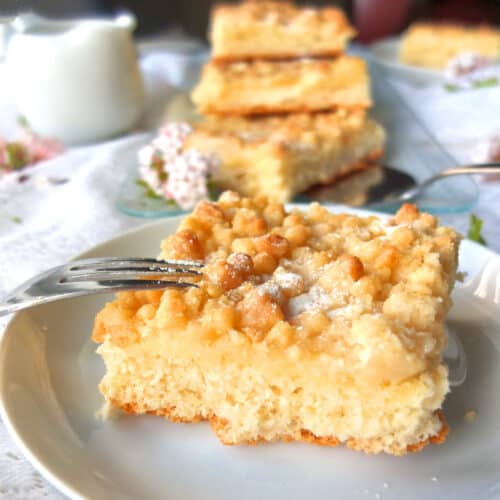
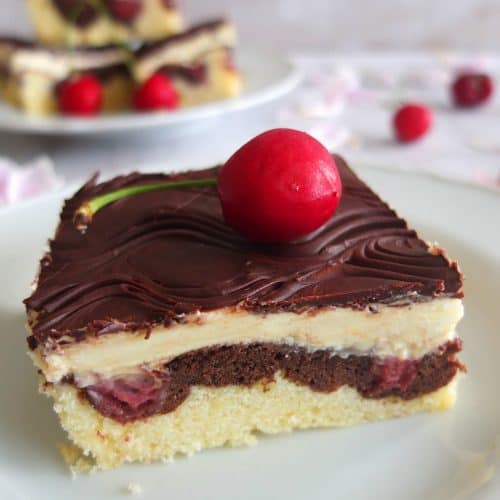
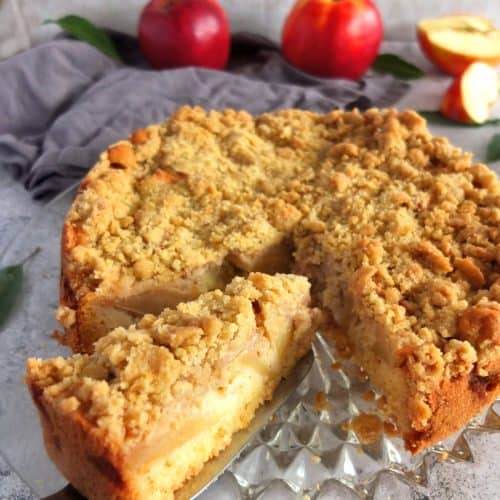
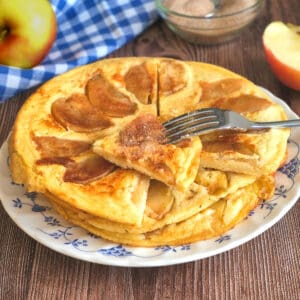
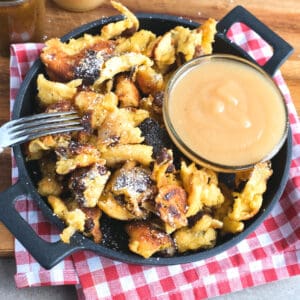
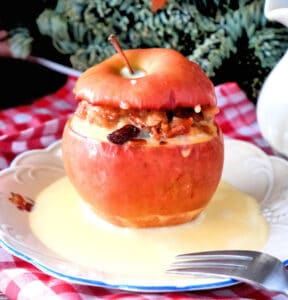
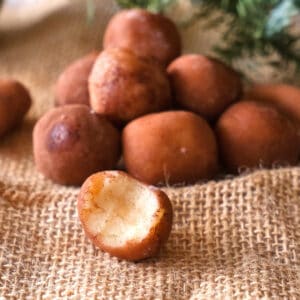
Alic
Hi Marita, in my home town in Texas with a large Central Euro population, my public high school cafeteria ladies made this Kuchen with prunes. Have you made it with reconstituted prunes? In 70-80s TX, we didn’t have access to prune plums. I’m wanting to recreate it.
Marita Sinden
Hi Alix, sorry about that I have not heard of a German cake using prunes but I will have a look out for it. If I find a recipe I will email you. Marita
deb
There is absolutely no indication of where and how to add the butter in the dough. Big omission?
Marita
Hi Deb,
oh dear thanks for pointing it out. I have updated the recipe now.
Best Wishes
Marita
Claudia
This is one of my all time favorites. My mom used to make this all the time. The great thing about this recipe is that you can substitute other fruits (peaches, apples, berries) and it's still delicious. Thanks for bringing up some wonderful memories.
Marita
Hi Claudia! Thanks! My mum used to do it as well. I am glad I could bring back some happy memories.